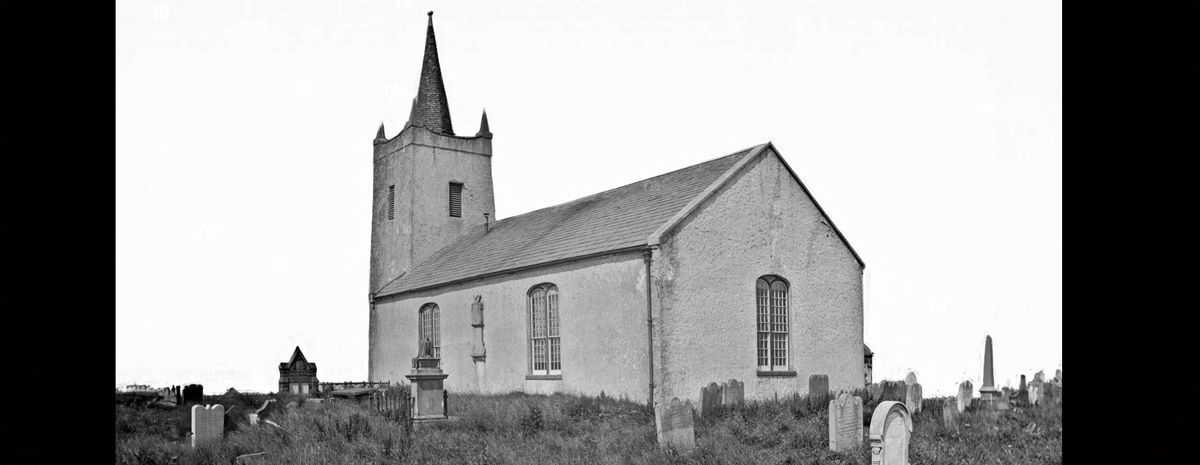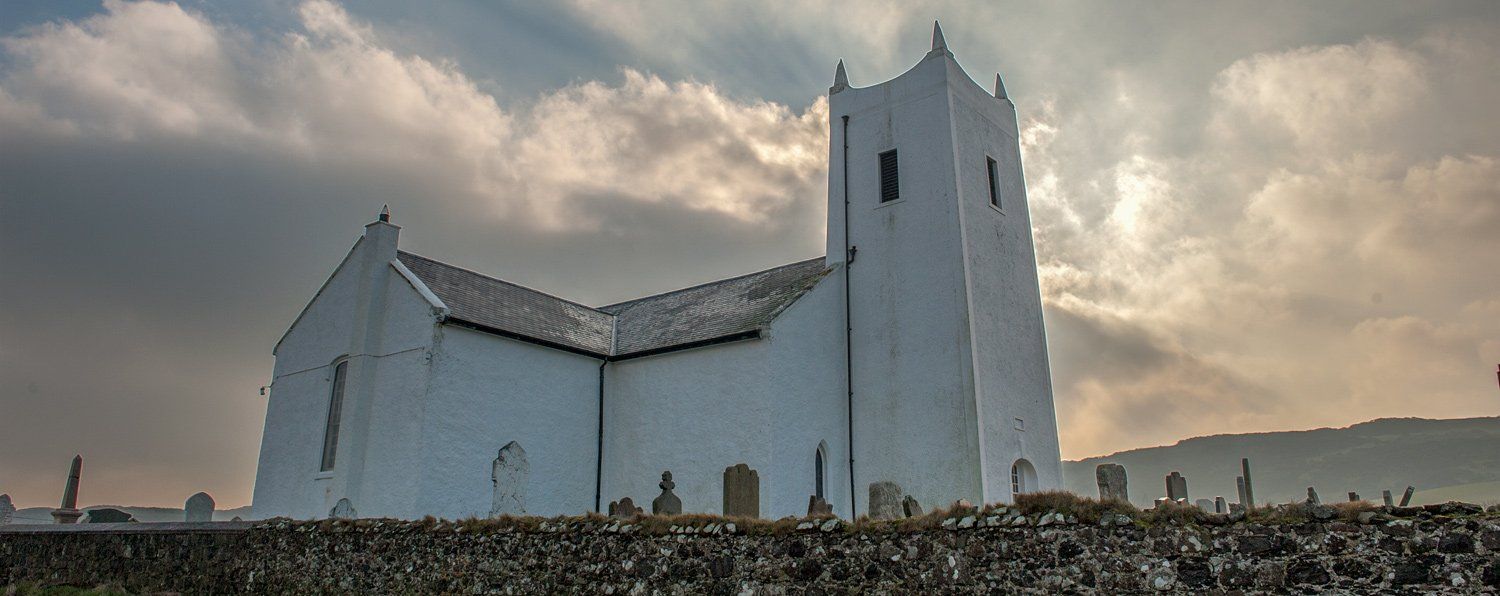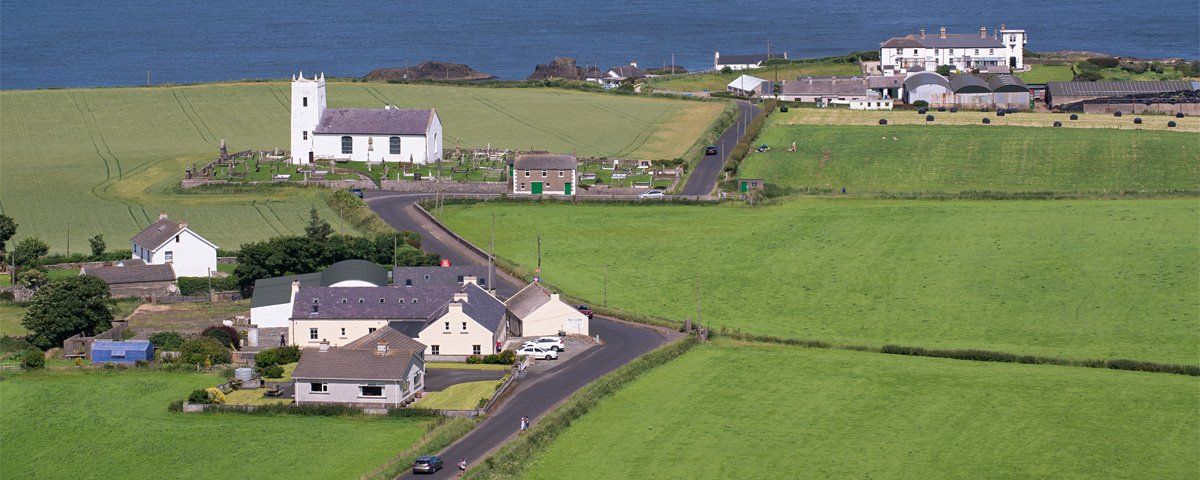One of the most memorable views along the north coast is that of Ballintoy Church with its deceptively Mediterranean look. The foundation of a church here is credited to the Stewart family who settled in the area after losing their estates in Bute. They were granted lands here and the family built a castle or fortified home in the early 1600s where Archibald Stewart lived and carried out his duties as agent to the Earl of Antrim. The castle and old church were lay siege to during the 1641 rebellion when local Presbyterians were forced to take refuge inside. During the siege, a local priest Father MacGlaime asked that water be allowed in each day for the women and children and it was agreed.
Each day he would take buckets of water down to the church where they were hauled up to the top of the tower. The unsuspecting force around the church did not know that oatmeal was placed below the waterline. After a week of laying siege to the church and no sign of starvation from within, they began to wonder how the people inside were surviving. The garrison in the castle were able to hold at bay the attackers until relief arrived and those laying siege retreated to Ballycastle. When the truth of what Father MacGlaime had done came out, he was subsequently murdered by people who had taken part in the siege. One of those insides was a Thomas Boyd of Lisconnan who later made a disposition before Oliver Cromwell's commissioners, the document is in the Library of Trinity College, Dublin.
In 1813 under the guidance of the Reverend Robert Trail, the church was rebuilt for the second time, the steeple from this church was removed after being damaged by a hurricane that struck the north coast in December of 1894. This was one of the most destructive hurricanes ever recorded here. The winds lasted for six hours at hurricane force and damage throughout the district was severe. In Portrush, waves tore a 40-foot breach in the north quay and stones weighing upwards of 10 tons were moved. Ballycastle experienced the sea reaching the Marine Hotel and the footbridge over the river Margie river was swept away.
Part of the steeple came down and crashed through the church roof, headstones were blown over and broken, houses in the village were severely damaged and in some cases demolished, stacks in the fields where scattered and several thatched cottages in the district caught fire and burned. At the harbour, several boats were destroyed and the sea washed around O'Roarke's cottage (now O'Roarke's Kitchen) to a depth of four feet. Inside the church are two beautiful stained glass windows, one depicts Saint Patrick at Slemish mountain, on the wall inside is a plaque to David Elder Jamieson who lost his life aboard HMS Defence at the Battle of Jutland, in the graveyard are the war graves of sailors lost from HMS Racoon and HMS Viknor during the First World War.
If you look on the side of the church you will see another unique feature, a sundial which dates to 1817 and was used to record the movements of the tides. Around 1760 the estate and castle was purchased by Alexander Fullerton who left the estate to his niece with the proviso that the Fullerton surname be retained, hence the Fullerton Arms in the village. On her marriage to Dawson Downing the Downing-Fullerton surname came into being. A relative of her husband Sir George Downing is remembered in the naming of Downing Street in London, the seat of the government. The castle was demolished in 1795 with the oak panelling, staircase, beams and fittings being re-used in Downing College, Cambridge. The Reverend Robert Trail who died in 1842 and is buried in the graveyard was the longest-serving Minister of Ballintoy Church having been here for 66 years.





